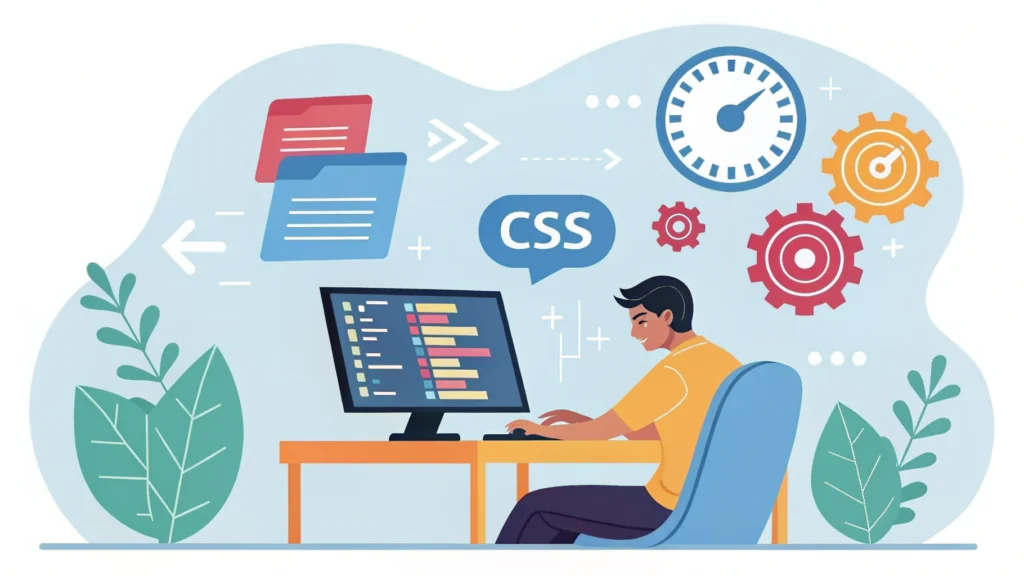Understanding Core Web Vitals
Core Web Vitals are a set of performance metrics that Google uses to evaluate the user experience of a webpage. These metrics focus on loading performance, interactivity, and visual stability. The three main components of Core Web Vitals are:
- Largest Contentful Paint (LCP): Measures loading performance. An LCP of 2.5 seconds or less is considered good.
- First Input Delay (FID): Measures interactivity. A FID of less than 100 milliseconds is ideal.
- Cumulative Layout Shift (CLS): Measures visual stability. A CLS score of less than 0.1 is optimal.
Improving these metrics can significantly enhance your site’s user experience and search engine rankings.
10 Best Practices for Core Web Vitals
1. Optimize Images
Images often contribute to slow loading times. Use modern formats like WebP to reduce file sizes without compromising quality. You can easily convert JPG or PNG images to WebP using our JPG to WebP Converter or PNG to WebP Converter.
2. Minify CSS and JavaScript
Reducing the size of your CSS and JavaScript files can significantly improve load times. Use tools like the CSS Minifier and JS Minifier to compress your files.
/* Example CSS Minification */
body { margin: 0; padding: 0; }
3. Use a Content Delivery Network (CDN)
A CDN can distribute your content globally, ensuring faster load times for users regardless of their location. This reduces latency and improves LCP.
4. Enable Lazy Loading for Images and Videos
Lazy loading ensures that media files are only loaded when they are visible in the viewport, reducing initial load time. You can implement this with the following code snippet:
<img src="image.jpg" loading="lazy" alt="Description">
5. Optimize Server Response Times
Ensure your server responds quickly to requests. Consider upgrading your hosting plan or using managed hosting solutions to achieve better performance.
6. Eliminate Render-Blocking Resources
JavaScript and CSS that block rendering can delay the loading of your page. Use asynchronous loading for JavaScript files and inline critical CSS where possible.
<script async src="script.js"></script>
7. Implement Proper Caching
Setting up caching policies can help browser cache your resources, resulting in a faster load time for repeat visitors. Utilize HTTP caching and browser caching effectively.
8. Reduce Redirects
Redirects can slow down page loading times. Audit your site to find and eliminate unnecessary redirects.
9. Monitor Performance Regularly
Utilize tools like WebToolsLab (All Tools) to monitor your Core Web Vitals and identify areas for improvement.
10. Use a Responsive Design
A responsive design not only enhances user experience across devices but also ensures better performance metrics. Test your design’s responsiveness using our Responsive Simulator.
FAQs
What are Core Web Vitals?
Core Web Vitals are essential metrics that measure real-world user experience, focusing on loading performance, interactivity, and visual stability.
How do I check my Core Web Vitals?
You can check your Core Web Vitals using tools like Google PageSpeed Insights or WebToolsLab.
Why are Core Web Vitals important for SEO?
Google considers Core Web Vitals as ranking factors. A better user experience leads to lower bounce rates and higher engagement, improving your site’s SEO.
Conclusion
Improving your Core Web Vitals is essential for providing a seamless user experience and enhancing your website’s search engine visibility. By following these best practices, you can significantly boost your site’s performance. Remember, consistent monitoring and optimization are key to maintaining a high-quality web experience.
